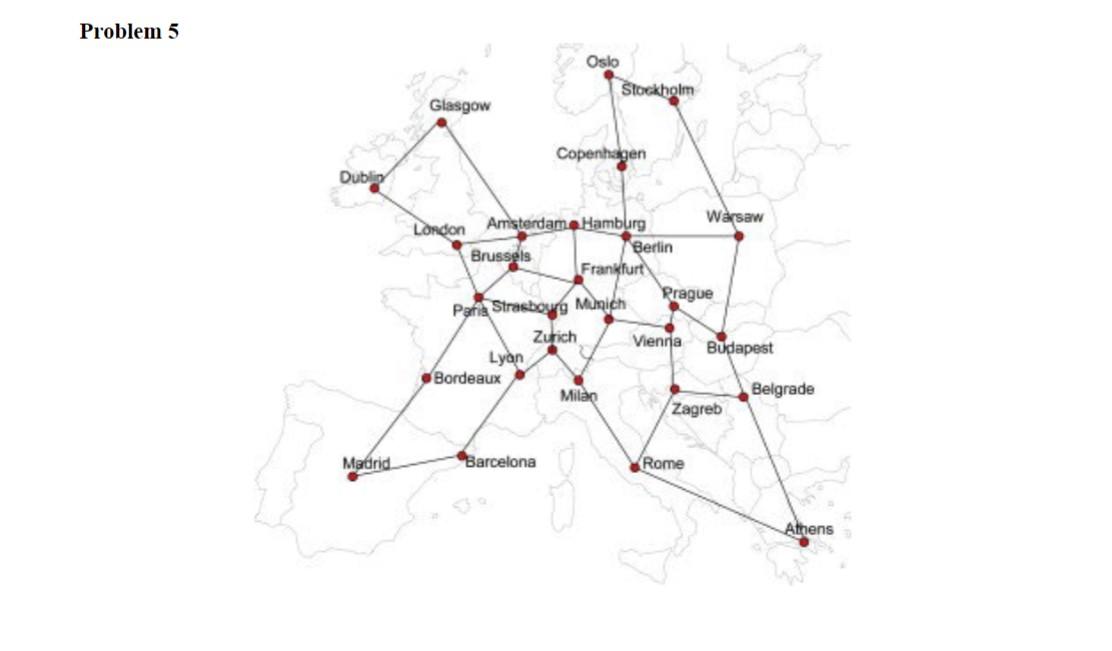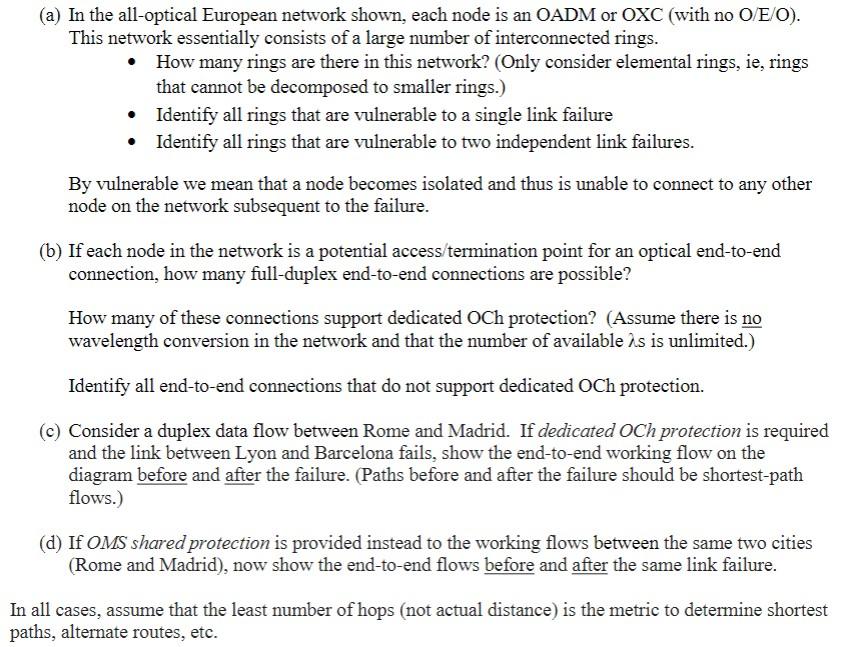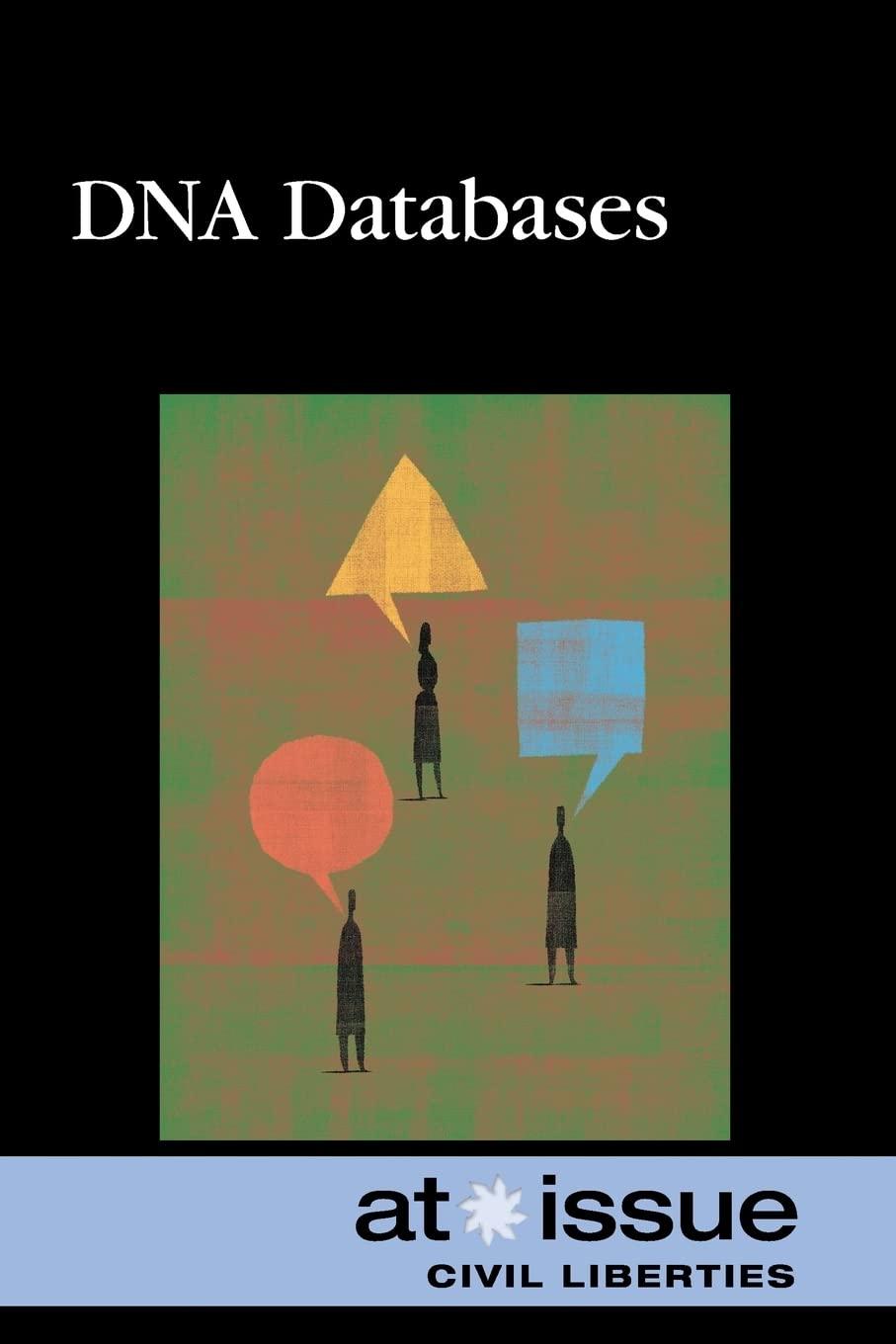

Problem 5 (a) In the all-optical European network shown, each node is an OADM or OXC (with no O/E/O ). This network essentially consists of a large number of interconnected rings. - How many rings are there in this network? (Only consider elemental rings, ie, rings that cannot be decomposed to smaller rings.) - Identify all rings that are vulnerable to a single link failure - Identify all rings that are vulnerable to two independent link failures. By vulnerable we mean that a node becomes isolated and thus is unable to connect to any other node on the network subsequent to the failure. (b) If each node in the network is a potential access/termination point for an optical end-to-end connection, how many full-duplex end-to-end connections are possible? How many of these connections support dedicated OCh protection? (Assume there is no wavelength conversion in the network and that the number of available s is unlimited.) Identify all end-to-end connections that do not support dedicated OCh protection. (c) Consider a duplex data flow between Rome and Madrid. If dedicated OCh protection is required and the link between Lyon and Barcelona fails, show the end-to-end working flow on the diagram before and after the failure. (Paths before and after the failure should be shortest-path flows.) (d) If OMS shared protection is provided instead to the working flows between the same two cities (Rome and Madrid), now show the end-to-end flows before and after the same link failure. all cases, assume that the least number of hops (not actual distance) is the metric to determine shortest ths, alternate routes, etc. Problem 5 (a) In the all-optical European network shown, each node is an OADM or OXC (with no O/E/O ). This network essentially consists of a large number of interconnected rings. - How many rings are there in this network? (Only consider elemental rings, ie, rings that cannot be decomposed to smaller rings.) - Identify all rings that are vulnerable to a single link failure - Identify all rings that are vulnerable to two independent link failures. By vulnerable we mean that a node becomes isolated and thus is unable to connect to any other node on the network subsequent to the failure. (b) If each node in the network is a potential access/termination point for an optical end-to-end connection, how many full-duplex end-to-end connections are possible? How many of these connections support dedicated OCh protection? (Assume there is no wavelength conversion in the network and that the number of available s is unlimited.) Identify all end-to-end connections that do not support dedicated OCh protection. (c) Consider a duplex data flow between Rome and Madrid. If dedicated OCh protection is required and the link between Lyon and Barcelona fails, show the end-to-end working flow on the diagram before and after the failure. (Paths before and after the failure should be shortest-path flows.) (d) If OMS shared protection is provided instead to the working flows between the same two cities (Rome and Madrid), now show the end-to-end flows before and after the same link failure. all cases, assume that the least number of hops (not actual distance) is the metric to determine shortest ths, alternate routes, etc








